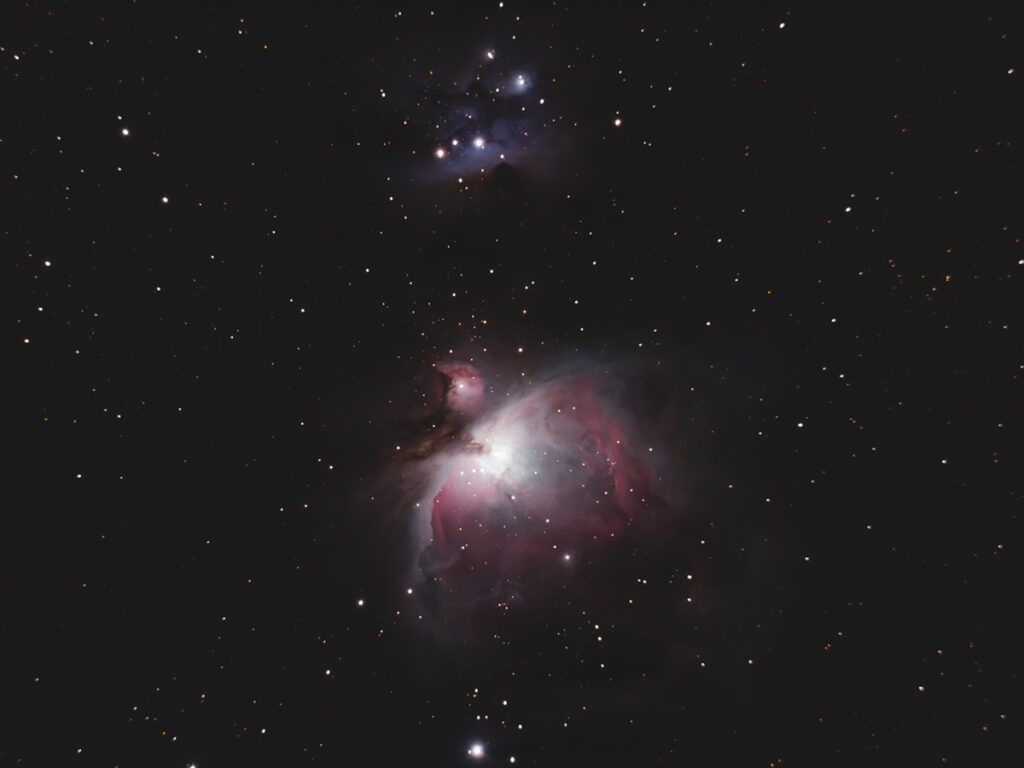
Telescope: Meade SN10 at f/4, Orion Atlas EQ-G
Camera: Canon EOS Ra
Filter: GSO IR Blocking Filter
Guide scope: Williams Optics 50mm, ASI290MM mini, PHD
Exposure: 58x10sec, ISO 800, saved as RAW
Darks: Internal (Long Exposure Noise Reduction On)
Flats: 32×1/60sec, tee shirt flats taken at dusk
Average Light Pollution: Red zone, poor transparency
Lensed Sky Quality Meter: 18.2 mag/arc-sec^2
Stacking: Mean with a 1-sigma clip.
White Balance: Nebulosity Automatic
Software: Backyard EOS, Nebulosity, Deep Sky Stacker, Photoshop
This field shows the Great Nebula bracketed by NGC 1977 to the north and NGC 1980 to the south, forming the Sword of Orion. This is a wonderful region to explore with binoculars or a small telescope. Visually the nebula shows a soft gray and displays a wealth of fine detail. This is also a very rewarding region to photograph and even short exposures show a range of beautiful colors. The red of the Great Nebula is the emission of hydrogen set aglow by hot young stars within the nebula while the smoky blue/gray of M42 and the soft blue of NGC 1977 is starlight reflecting off of interstellar dust. The dark lanes are veils of dust in the foreground.
This is the first in a series of images taken to evaluate how the SN10 performs with a full-frame camera. It’s not perfect, but not bad either. I forgot how fast the SN10 is, on this particular evening reaching my local skyglow limit in only 20 second and anything longer than 10 seconds saturated the core of M42. Wonderful!
The Sword of Orion is currently well placed in the south as the sky darkens.
Recent Comments